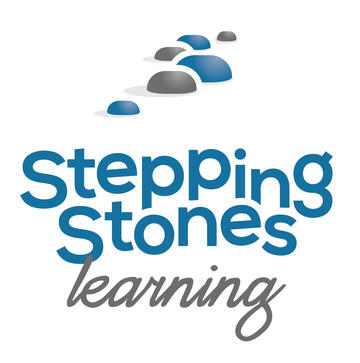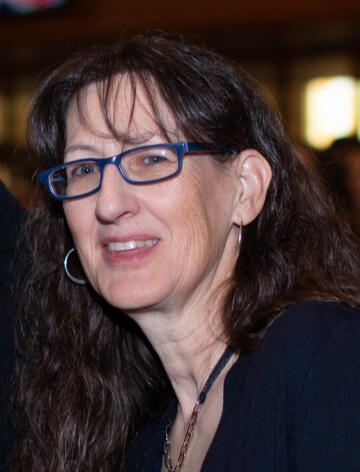
Developing confidence in learning
Educational therapy for children and teens struggling with reading and math skills by Sharon Shantz, M Ed.
"Learning is not the product of teaching. Learning is the product of the activity of learners"
~ John Holt ~
Sharon Shantz
Educational and Dyslexia Therapist

My StoryI never wanted to be a teacher. My dad, who was a college professor, told me not to become a teacher. “You’re good at math, Sharon. Why don’t you become an accountant?” he suggested. So why do I now spend my energy helping students with learning challenges?My husband and I had prayerfully agreed that I would homeschool our children. So much for not becoming a teacher! God soon gave us five children, whom I homeschooled over the course of fifteen years. During that time, I discovered the joy of watching my children learn. I especially enjoyed the moments when things “clicked” when they were learning to read or grappling with a new concept in math. I relished the challenge of finding the best way to teach each child and spent many hours in searching for the best resources for each one. Sometimes, things did not “click,” leading me to look beyond “normal” teaching methods. I investigated local name-brand learning centres, but they were not specifically trained in the difficulties we faced. Specialized full-day programs such as Arrowsmith were too expensive. I also knew many children in the public-school system who had fallen through the cracks by not receiving the individual attention they needed. We did not see that as a solution.In my search, I discovered NILD® Educational Therapy. It offered hope!I became a therapist to help my own children and have continued developing professionally in order to help others. It’s my joy to see my students overcome their challenges. For example, I’ve watched an 8th grade girl, once slumped at the blackboard, insecure and embarrassed by her inabilities, develop into a confident young woman, certain of her gifts and unafraid to read in front of others. I’ve seen the light of understanding switch on for numerous students as they understood a math concept for the first time. I’ve observed the joy of learning how to learn in the faces of my students. My passion is to see students become confident, competent learners.What I do
I am both an Educational Therapist and a DyslexiaTherapist. Some students require help in a number of areas of learning, so require educational therapy. Others thrive in most aspects of learning, but struggle with reading. These students might only require dyslexia therapy.I offer a free consultation to help you determine the course of action best designed to meet your student's needs. If an assessment has already been obtained, I can assist with understanding the assessment. My goal is to help your student learn how to learn.
My Qualifications
Masters of Education in Exceptional Student Education – Southeastern University
Professionally Certified Educational Therapist (PCET) – National Institute for Learning Development (NILD) Canada
Certified Dyslexia Therapist (CDT) – International Dyslexia Association
Education Therapy
Students in NILD Educational Therapy® receive two sessions of intensive educational therapy per week. This might be either in individual or small group settings. These sessions include a variety of techniques designed to address students’ specific areas of difficulty and to improve their overall ability to think, reason and process information. Techniques emphasize basic skill areas such as reading, writing, spelling and math, applying reasoning skills within each area.Students become better able to:
• stay focused on the teacher’s voice
• accurately hear and remember what the teacher is saying
• read visual information on the board, transparencies, or computer screen
• understand the main points of what the teacher is saying and decide the significant information to record
• remember how to spell the words being recorded
• record information legiblyEducational therapists become better able to individualize intervention by:
• focusing specifically on students’ areas of difficulty and dealing with
problems as they arise during the actual learning process
• maintaining the intensity of focus needed to help the student work
through difficulties
• developing the trust needed to free the student to accept and work
on difficult areasParents become better able to:
• provide structure and accountability
• supervise homework
• maintain regular contact with the educational therapist to increase
understanding of the therapy process and collaborate in providing an effective program for their childStudents complete their programs when they become independent and
successful in the regular classroom. This decision is based upon recommendations from the educational therapist, parents and classroom teachers and usually takes a minimum of three years.Strategies learned in educational therapy should enable students to remain independent and successful throughout their school years. They generally develop skills to pursue a career in the field of their choice.Learning disabilities can be addressed whenever they are identified, not just in childhood. The NILD techniques are effective regardless of age and can be adapted to all levels of functioning.
How is NILD Educational Therapy Different from Tutoring?
The focus of NILD Educational Therapy® is the development of clear,
efficient thinking. Students are given tools to enable them to overcome
specific learning weaknesses. Tutoring typically focuses on content while educational therapy builds efficient learning processes.NILD Educational Therapy® teaches students how to think rather than what to think.NILD Educational Therapy® is skill-oriented, improving basic learning skills so students can learn and retain content.
What is Dyslexia?
The International Dyslexia Association has adopted the following definition of Dyslexia:Dyslexia is a specific learning disability that is neurobiological in origin. It is characterized by difficulties with accurate and/or fluent word recognition and by poor spelling and decoding abilities. These difficulties typically result from a deficit in the phonological component of language that is often unexpected in relation to other cognitive abilities and the provision of effective classroom instruction. Secondary consequences may include problems in reading comprehension and reduced reading experience that can impede growth of vocabulary and background knowledge.What does this mean?A person with dyslexia is no more or less intelligent than a person without dyslexia. Their brains are wired differently than other people, however, so they usually need a different approach to reading instruction. If these students do not receive the correct kind of help, they tend to avoid reading, thus compounding the problem. They read fewer words than their peers, become familiar with less vocabulary and so have an even harder time keeping up with reading required of them. It becomes a downward spiral.The type of reading instruction these students require is actually beneficial for all struggling readers.
Dyslexia Therapy
The type of reading instruction recommended by reading research is known as structured literacy intervention. This instruction includes phonology - the sound structure of spoken words; sound-symbol association - the connection between letters and sounds; syllable instruction; morphology - the study of word formation; syntax - the way words are structured to make sentences; and semantics - the meaning of words.
I include each of these elements in dyslexia therapy while adapting instruction to each student's individual needs.
For More Information
Stepping Stones Learning,
is operated as part of Shantz Professional Services Inc.
Registered Office:
22 King St. S. Suite 300,
Waterloo ON N2L 6H7
Canada
Note: All therapy sessions take place at my home studio near St.ClementsContact information:
e-mail: sharon@steppingstoneslearning.caPhone: 519-503-1822
Fax: 226-887-8681
Contact us for more information or a free consultation